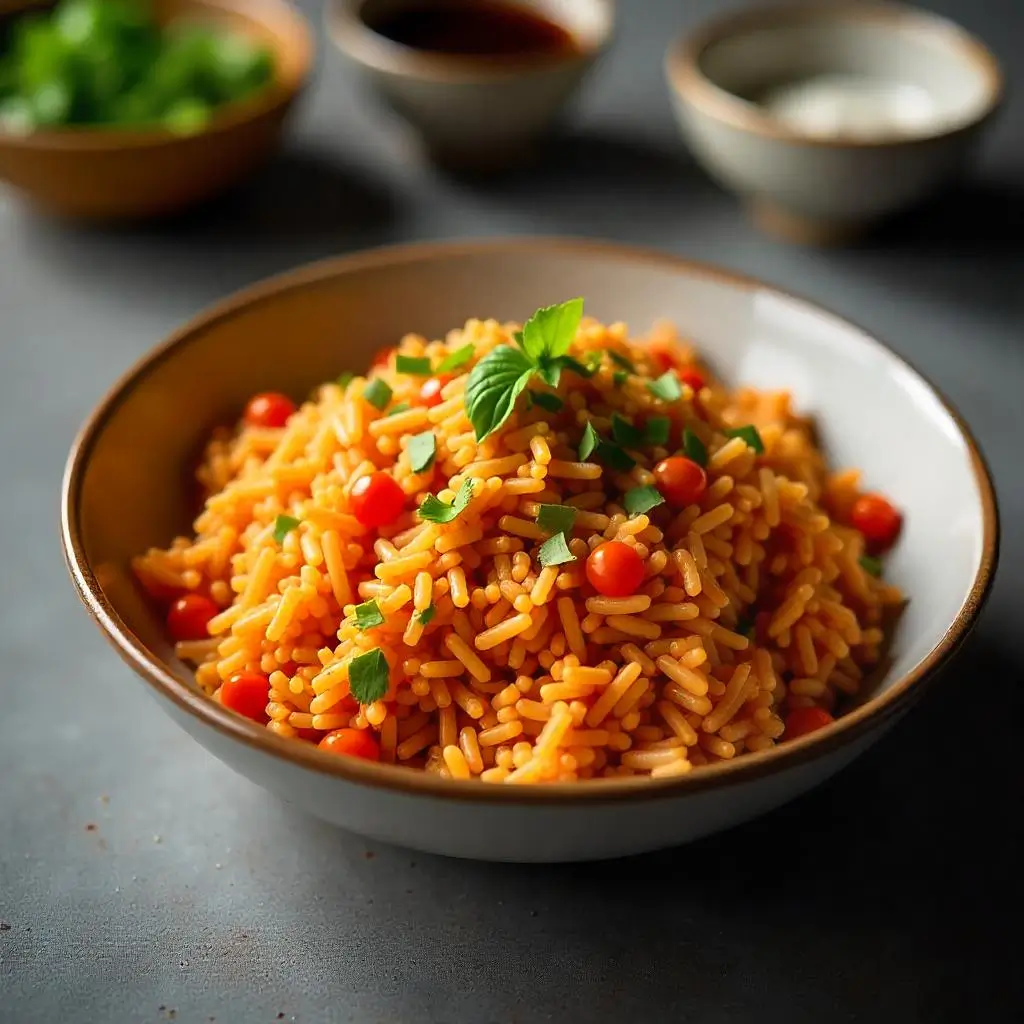Hi there! I’m Nagi, and through my years of exploring Asian cuisine, I’ve discovered that some of the most memorable meals come from reimagining classic dishes. Consequently, this Red Fried Rice represents exactly that philosophy – honoring tradition while embracing practicality.
Traditional freid red rice, commonly known as “Com Do,” is typically a steamed tomato rice served alongside various meats and main dishes. However, my version transforms this beloved side dish into a complete, satisfying meal. Although this isn’t an authentic Vietnamese recipe, it captures the essence of the original while adding protein and vegetables directly into the rice.
Moreover, this dish falls beautifully into the category of red fried rice or Vietnamese fried rice, making it an excellent representation of Vietnamese food adapted for busy home cooks. Furthermore, it demonstrates how traditional flavors can seamlessly integrate into quick meal solutions.
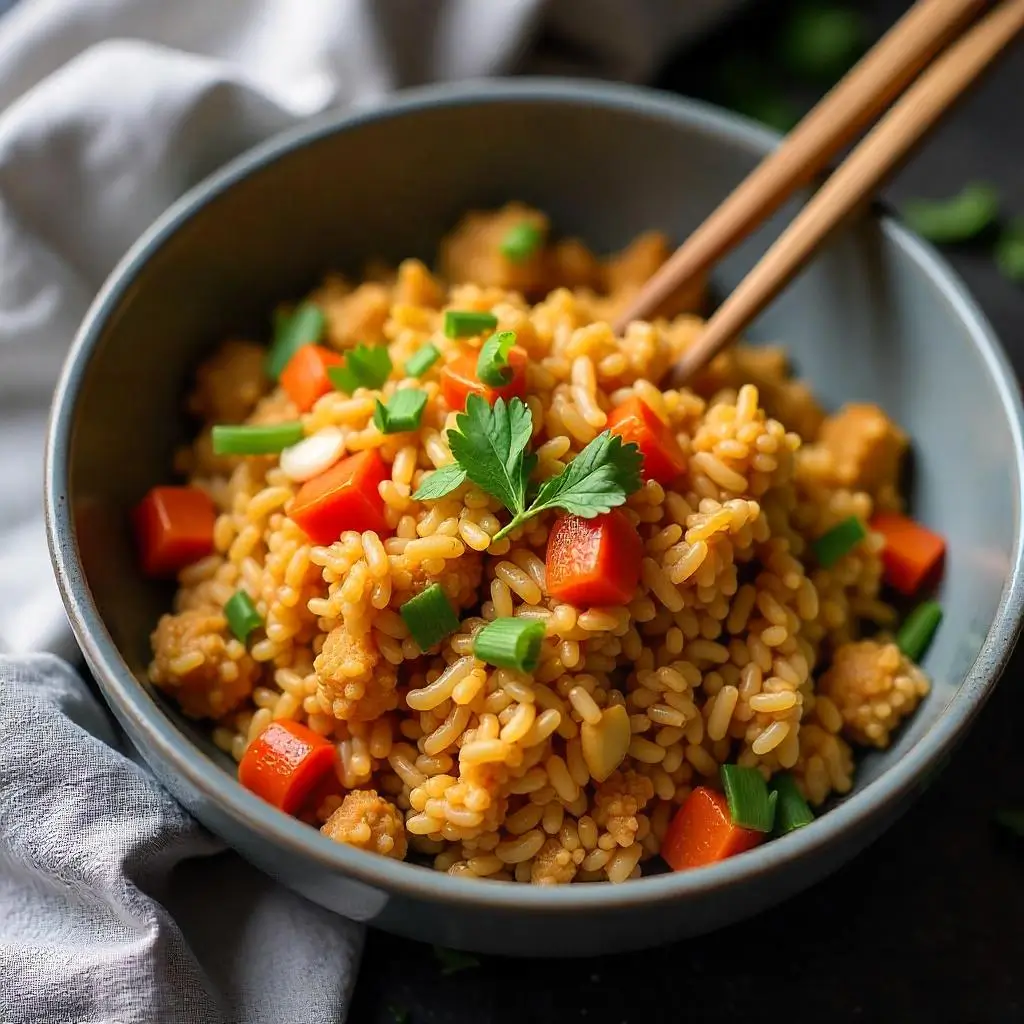
Table of content :
- Why This Recipe Works as a Quick Meal Solution
- Essential Ingredients and Their Roles
- Instructions :
- Expert Tips for Success
- Serving Suggestions and Variations
- Storage and Meal Prep Guidelines
- Nutritional Information
- Other recipe :
Why This Recipe Works as a Quick Meal Solution
First and foremost, fried rice naturally serves as a complete meal when properly constructed. Additionally, this particular recipe relies on convenient ingredients that require minimal preparation – pre-cut ham, frozen peas, and eggs that cook directly in the pan.
In contrast to elaborate dinner preparations, this dish comes together in just seven minutes of active cooking time. Similarly, the ingredient list focuses on pantry staples and easily accessible items, making it perfect for those “what’s for dinner?” moments we all experience.
Essential Ingredients and Their Roles
The Foundation: Day-Old Rice
Most importantly, using day-old rice ensures the perfect texture for fried rice. Fresh rice tends to become mushy and clumpy, whereas overnight rice maintains individual grains that crisp beautifully in the pan. As a result, I always recommend keeping cooked rice in the freezer for emergency meals like this one.
Additionally, jasmine rice works exceptionally well due to its popularity in Vietnamese cuisine. Nevertheless, other white or brown rice varieties will also produce excellent results.
The Star: Tomato Paste
Undoubtedly, tomato paste provides the signature red color and rich tomato flavor that defines this dish. Furthermore, it concentrates the taste without adding excess moisture that could make the rice soggy.
Protein Power: Ham and Eggs
For convenience, pre-cut ham eliminates prep time while adding substantial protein. Alternatively, bacon works beautifully and introduces a smoky element to the dish. Meanwhile, eggs scrambled directly in the pan contribute additional protein and visual appeal through their golden color.
The Vietnamese Touch: Fish Sauce
Arguably, fish sauce represents the most crucial ingredient for authentic Vietnamese flavor. Often called “Vietnam’s soy sauce,” it adds incredible depth and umami richness. Initially, the aroma might seem strong, but it mellows beautifully during cooking, creating an irresistible savory base.
Balancing Act: Soy Sauce
In combination with fish sauce, soy sauce creates perfect flavor balance. Therefore, use light or all-purpose soy sauce rather than dark varieties, which could overpower the tomato notes.
French Influence: Butter
Interestingly, butter reflects Vietnam’s French colonial history and adds richness that oil simply cannot match. Consequently, this small detail elevates the entire dish’s flavor profile.
Supporting Cast: Garlic and Vegetables
Similarly, garlic appears in virtually every fried rice recipe for good reason – it creates an aromatic foundation. Meanwhile, frozen peas provide color, nutrition, and sweet contrast to the savory elements. However, feel free to substitute other vegetables like carrots, corn, zucchini, spinach, or cabbage based on your preferences.
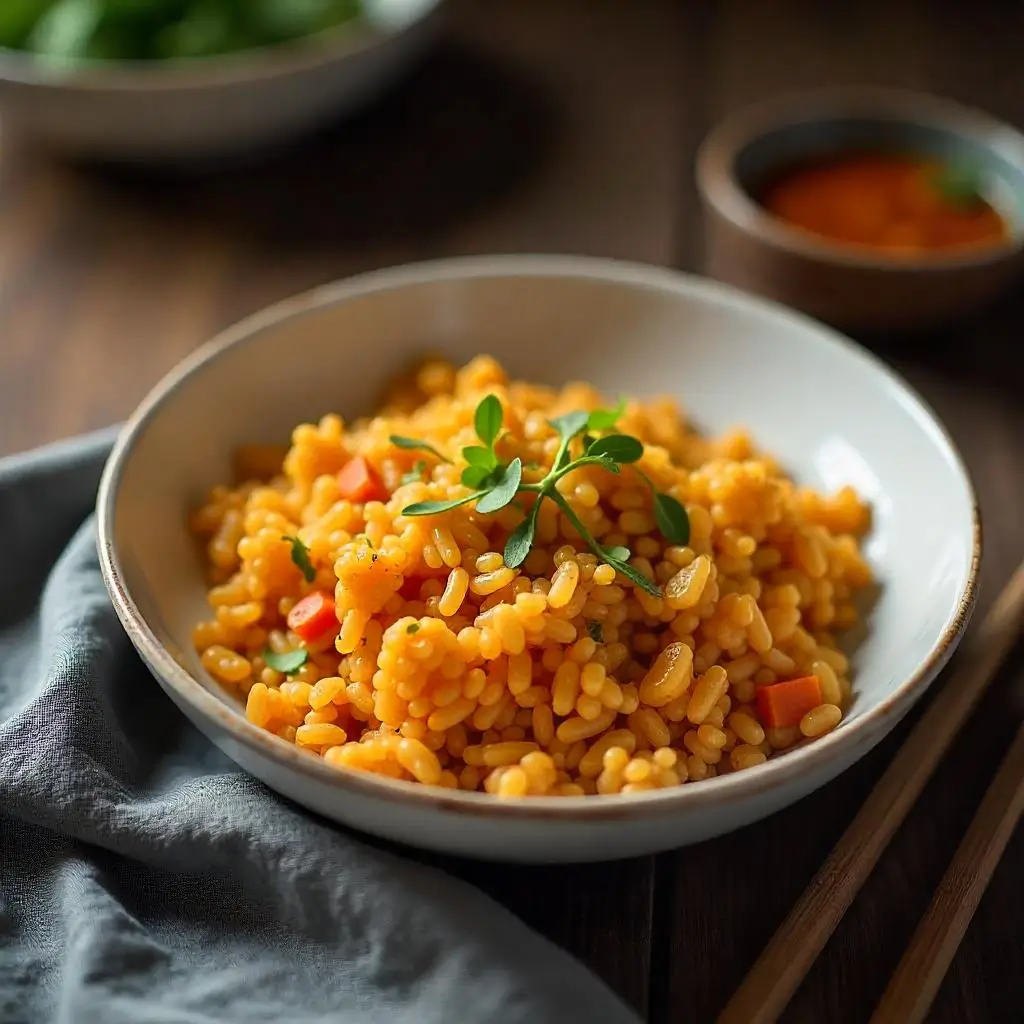
Instructions :
- Prep Time: 5 minutes | Cook Time: 7 minutes | Total Time: 12 minutes
- Heat butter in a large skillet or wok over medium-high heat. Add minced garlic and sauté for 30 seconds until fragrant.
- Add diced ham and frozen peas. Cook for 2-3 minutes until ham is lightly browned and peas are heated through.
- Add day-old rice, breaking up any clumps with a spatula. Stir in tomato paste, ensuring rice is evenly coated and turns red.
- Pour in fish sauce, soy sauce, and sugar. Stir constantly for 2-3 minutes, allowing rice to caramelize slightly.
- Push rice mixture to one side of the pan. Pour beaten eggs into the empty space and scramble until just set.
- Gently fold scrambled eggs into the rice mixture. Garnish with sliced green onions if desired. Season with salt and pepper to taste.
- Serve immediately while hot.
Expert Tips for Success
Rice Management
Consequently, I cannot emphasize enough the importance of using day-old rice. Therefore, make it a habit to cook extra rice and freeze portions for future fried rice adventures. Alternatively, spread freshly cooked rice on a tray to cool rapidly before using.
Ingredient Substitutions
For those with shellfish allergies, replace fish sauce with additional soy sauce, though the flavor profile will differ slightly. Similarly, vegetarians can omit the ham and add extra vegetables or tofu for protein.
Equipment Matters
Additionally, using a large pan or wok prevents overcrowding, which leads to steaming rather than frying. Therefore, if your pan seems too small, cook the recipe in two batches for optimal results.
Serving Suggestions and Variations
Versatile Serving Options
This red Vietnamese fried rice works beautifully as a standalone meal for busy weeknights. However, it also serves excellently as a side dish for Vietnamese or other Asian meals. Moreover, traditional Vietnamese red rice often accompanies various meats, so this fried rice version pairs wonderfully with grilled proteins, including steak.
Enhancement Ideas
To increase the vegetable content, consider adding bean sprouts or shredded cabbage during the final mixing stage. Furthermore, these additions provide extra crunch and nutrition without compromising the dish’s quick-cooking nature
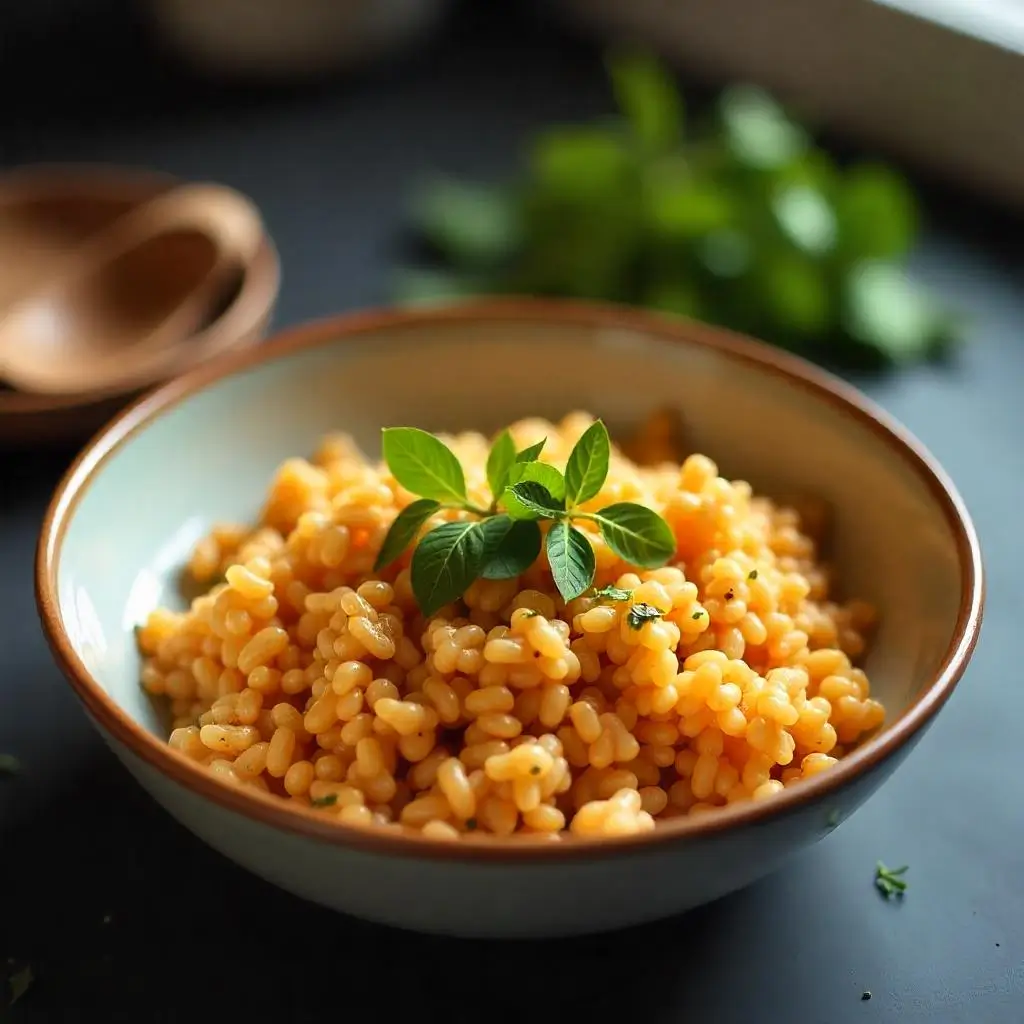
Storage and Meal Prep Guidelines
Refrigerator Storage
- Fresh Leftovers: Store in airtight containers for up to 3-4 days in the refrigerator
- Temperature: Keep at 40°F (4°C) or below
- Cooling: Allow to cool completely before refrigerating (within 2 hours of cooking)
Freezer Storage
- Duration: Freeze for up to 2-3 months in freezer-safe containers
- Packaging: Use portion-sized containers or freezer bags, removing excess air
- Labeling: Date and label containers for easy identification
Reheating Instructions
Microwave Method:
- Place desired portion in microwave-safe dish
- Add 1-2 tablespoons of water or broth
- Cover and heat for 1-2 minutes, stirring halfway through
- Heat until internal temperature reaches 165°F (74°C)
Stovetop Method:
- Heat 1 tablespoon oil in a large skillet over medium heat
- Add cold fried rice and stir frequently for 3-4 minutes
- Add splash of water if rice seems dry
- Heat until steaming throughout
Oven Method:
- Preheat oven to 350°F (175°C)
- Place rice in covered oven-safe dish with 2-3 tablespoons liquid
- Heat for 15-20 minutes, stirring once halfway through
Meal Prep Tips
Make-Ahead Strategy:
- Cook rice 1-2 days in advance and refrigerate
- Pre-cut ham and measure seasonings
- Store prepped ingredients separately until ready to cook
Batch Cooking:
- Double the recipe and freeze half in individual portions
- Cook plain rice in larger batches and freeze for future fried rice projects
- Prepare vegetable mix (peas, garlic, green onions) and freeze in meal-sized portions
Food Safety Notes
- Never leave cooked rice at room temperature for more than 2 hours
- When reheating, ensure internal temperature reaches 165°F (74°C)
- Don’t refreeze previously frozen rice
- Use “first in, first out” principle when using stored rice
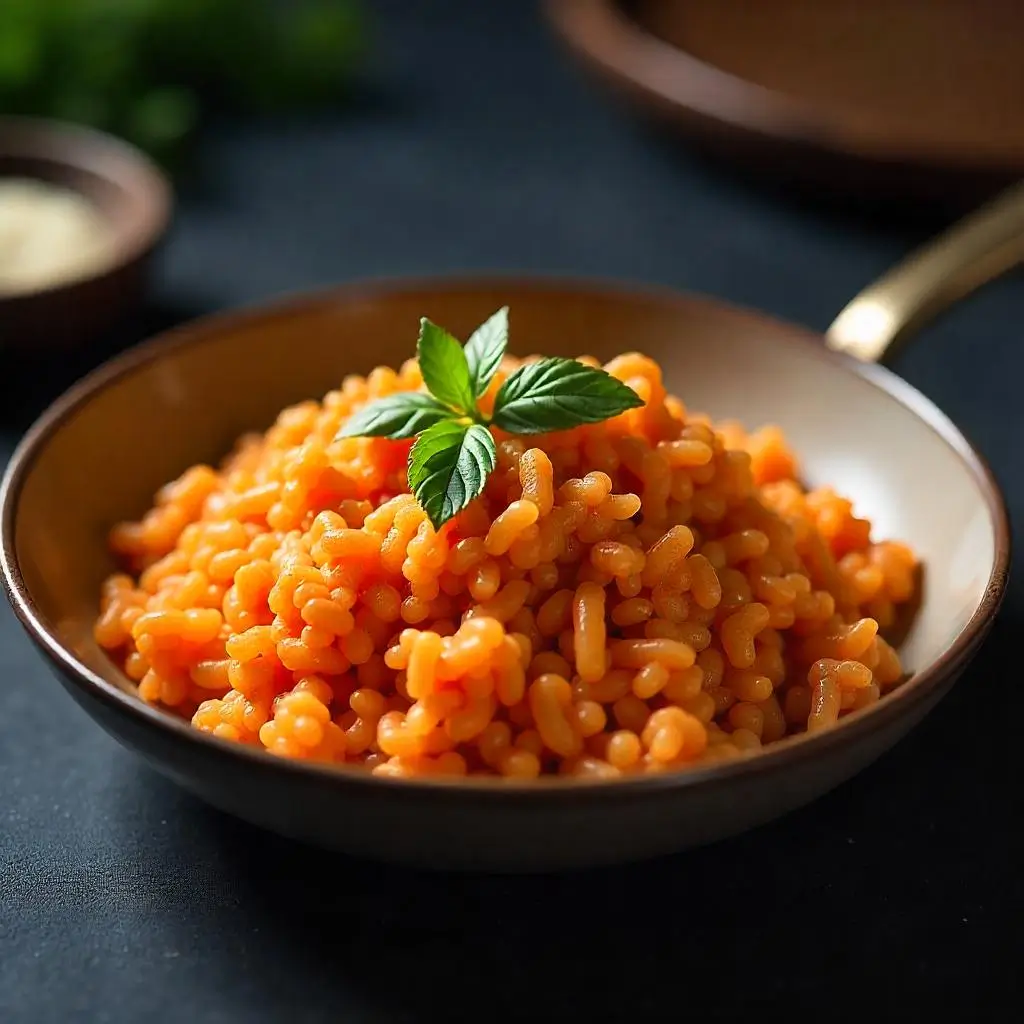
Nutritional Information
Per Serving (1/4 of recipe):
- Calories: 285
- Protein: 15g
- Carbohydrates: 35g
- Fat: 8g
- Saturated Fat: 4g
- Fiber: 2g
- Sugar: 4g
- Sodium: 920mg
- Cholesterol: 165mg
Key Nutrients:
Calcium: 6% DV (from eggs)
Vitamin A: 12% DV (from peas and tomato paste)
Vitamin C: 8% DV (from peas)
Iron: 10% DV (from eggs and fortified rice)
Other recipe :
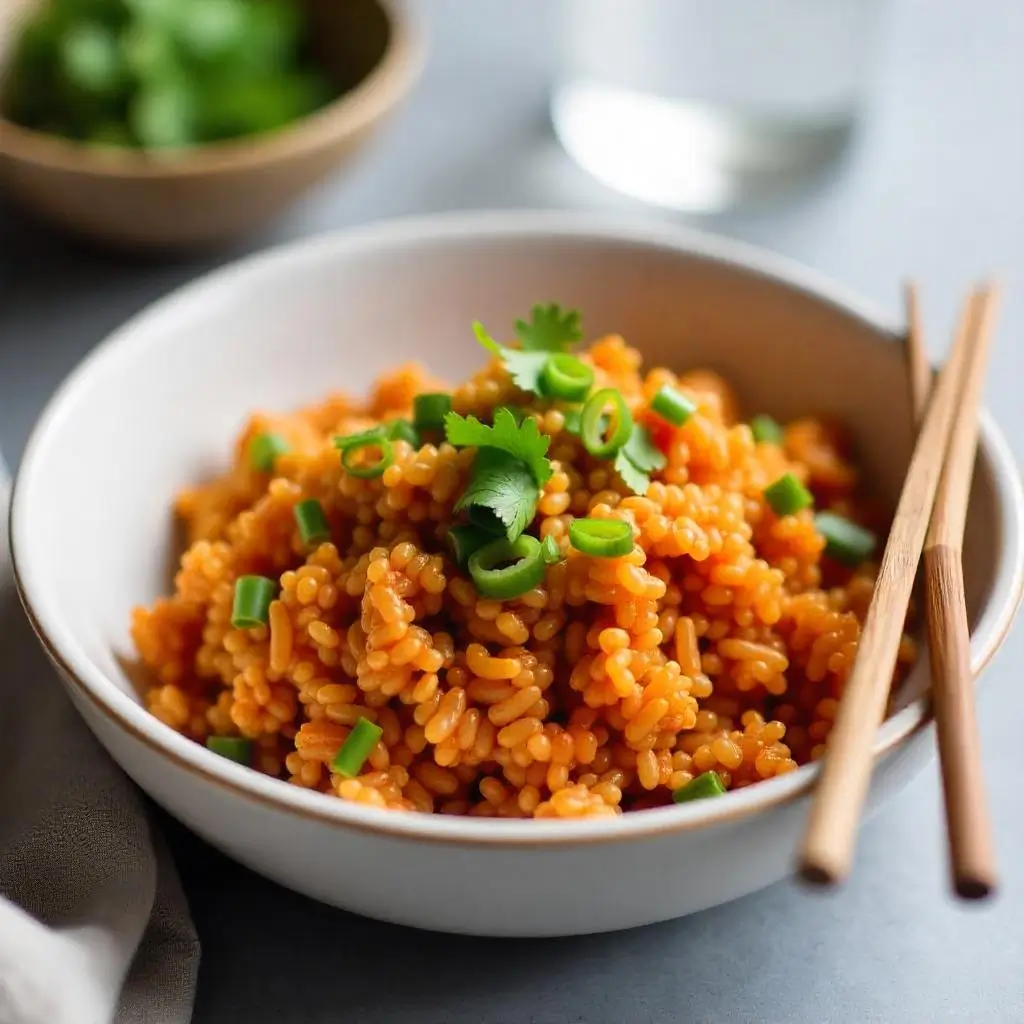
Ultimately, this Red Vietnamese Fried Rice represents everything I love about home cooking – it’s quick, flavorful, and adaptable to your family’s preferences. Additionally, it demonstrates how traditional flavors can inspire modern solutions to everyday meal challenges.
Whether you’re new to Vietnamese flavors or a seasoned enthusiast, this recipe offers an accessible entry point into the wonderful world of Asian cuisine. Therefore, I encourage you to try this recipe and share your experiences in the comments below.
Remember, cooking should be enjoyable and flexible, so don’t hesitate to make this recipe your own. After all, the best dishes are those that bring families together around the dinner table, regardless of how quickly they come together.
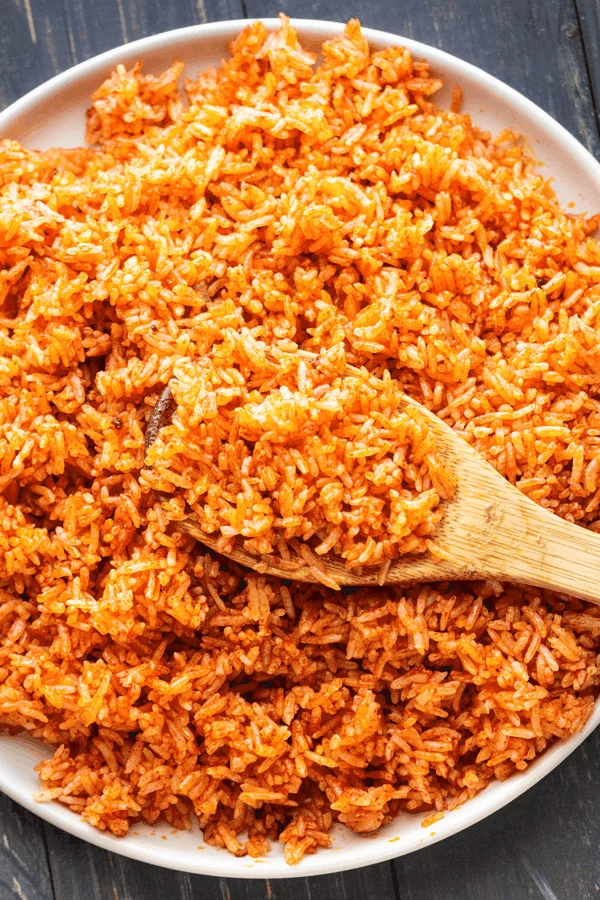
“How to Make the Perfect Red Fried Rice Recipe at Home”
Description
Learn how to make the perfect red fried rice recipe at home with simple ingredients and easy steps. A flavorful, vibrant, and quick dish everyone will love!
Ingredients
Instructions
- Heat butter in large skillet over medium-high heat. Sauté garlic 30 seconds.
- Add ham and peas. Cook 2-3 minutes until ham browns.
- Add rice, breaking up clumps. Stir in tomato paste until evenly coated.
- Add fish sauce, soy sauce, and sugar. Cook 2-3 minutes, stirring constantly.
- Push rice aside, scramble eggs in empty space until just set.
- Fold eggs into rice. Garnish with green onions. Season to taste.
- Serve immediately while hot.
Notes
- For the best flavor and texture, use day-old cooked rice when making fried rice. Freshly cooked rice tends to be too moist and can make the dish soggy. Also, feel free to customize your red fried rice with your favorite vegetables, proteins, or spices to suit your taste!
